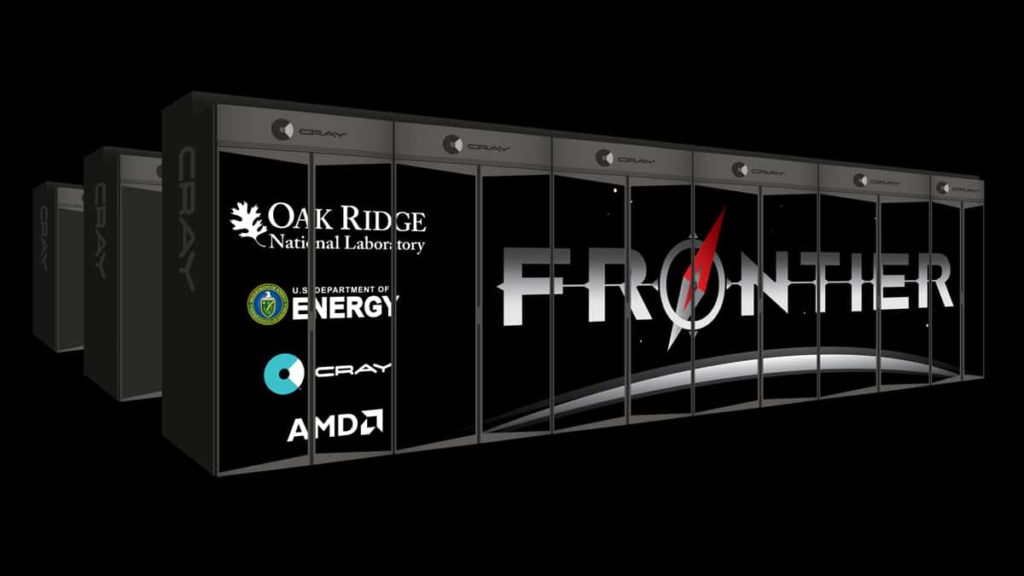
The Oak Ridge National Laboratory’s ORNL Frontier supercomputer has achieved a new world record by breaking the Exaflop barrier at 1.102 exaflop/s. It is based on the HPE Cray EX235a architecture and features third-gen AMD EPYC 64C 2 GHz processors and AMD Instinct 250X GPUs. The system has a total of 8,730,112 cores and utilizes AMD’s Infinity Fabric for the CPU-GPU interconnect. Its power efficiency is rated at 52.23 gigaflops per watt.
| SYSTEM SPECS | TITAN | SUMMIT | FRONTIER |
|---|---|---|---|
| Peak Performance | 27 PF | 200 PF | > 1.5 EF |
| Cabinets | 200 | 256 | > 100 |
| Node | 1 AMD Opteron CPU 1 NVIDIA K20X Kepler GPU | 2 IBM POWER9 CPUs 6 NVIDIA Volta GPUs | 1 HPC and AI Optimized 3rd Gen AMD EPYC CPU 4 Purpose Built AMD Instinct 250X GPUs |
| CPU-GPU Interconnect | PCI Gen2 | NVLINK Coherent memory across the node | AMD Infinity Fabric |
| System Interconnect | Gemini | 2x Mellanox EDR 100G InfiniBand Non-Blocking Fat-Tree | Multiple Slingshot NICs provide 100 GB/s of network bandwidth. Slingshot network which provides adaptive routing, congestion management, and quality of service. |
| Storage | 32 PB, 1 TB/s, Lustre Filesystem | 250 PB, 2.5 TB/s, GPFS | 2-4x performance and capacity of Summit’s I/O subsystem. Frontier will have near-node storage like Summit. |
Exascale is the next level of computing performance. By solving calculations five times faster than today’s top supercomputers—exceeding a quintillion, or 1018, calculations per second—exascale systems will enable scientists to develop new technologies for energy, medicine, and materials. The Oak Ridge Leadership Computing Facility will be home to one of America’s first exascale systems, Frontier, which will help guide researchers to new discoveries at exascale.
Sources: Top 500 (via TechPowerUp), ORNL
